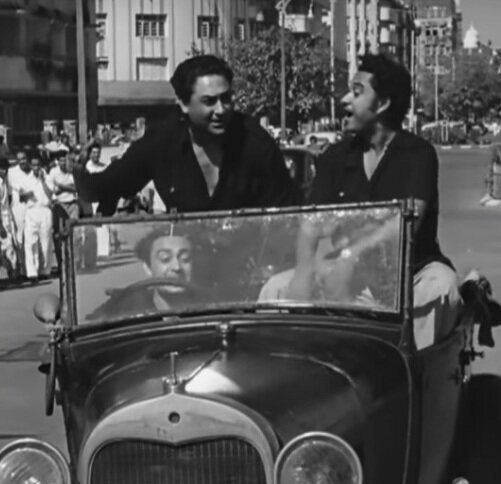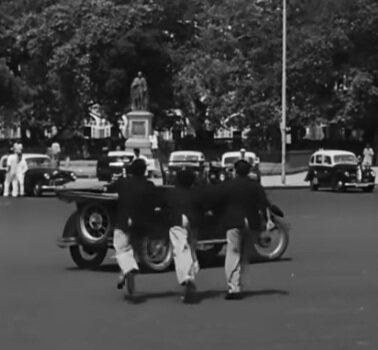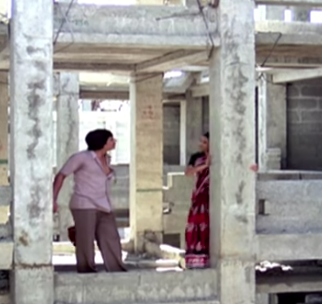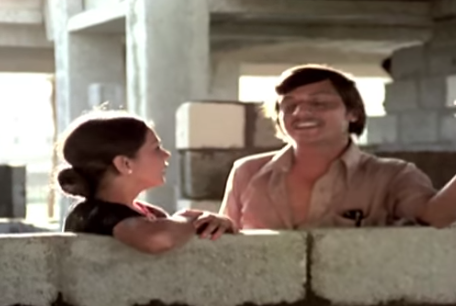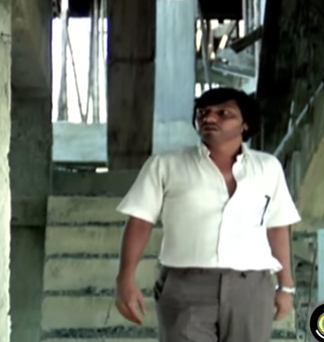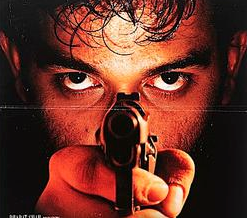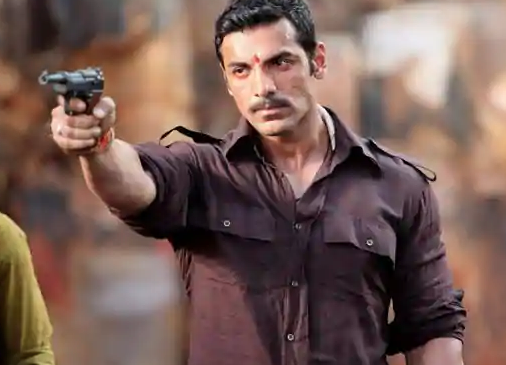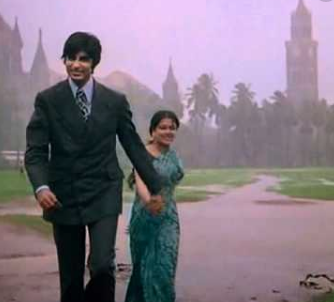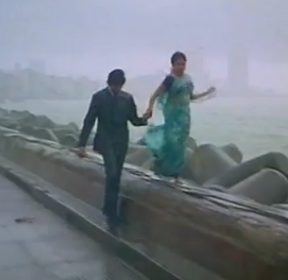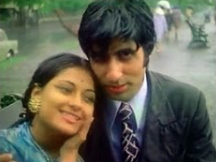BOMBAY: A CITY IN SONGS
‘Bajuuuu…’
The song starts in a true mumbaiyya vein, breaks into ‘…babu samjho ishare, horn pukare…’ and with that the three Kumar brothers take us on a merry spin around some now-identifiable-now-not parts of South Bombay in the film Chalti Ka Naam Gadi (1958). Eros Cinema stands tall in the background as we go through peopled streets and watch cross-ers, walkers, workers, shoppers and idlers negotiate space between taxis and trams. Everything and everyone is on the move for ’…yahan chalti ko gadi kehte hain pyare’, as if one will cease to exist if one stops. Point noted and we take the city in stride. Merrily so…
But only until we are plucked out of the fun and thrown head-on into the haunting alienation and angst of Farooq Sheikh as a taxi driver, walking the tight rope of inclusion and exclusion as he motors through the city, quite soul-lessly, in this song from the film Gaman (1978),
‘Seene main jalan ankhon main toofan sa kyun hai,
is shaher main har shaks pareshan sa kyun hai…’
While this song, uncomfortably tears at you, ‘Bambai Nagariya’ from a fairly recent film Taxi No. 9211(2006) does so in quick montages of the city. It is a young, fast tour of the city from Rajabai Tower, to Marine Drive, VT, Oval maidan, Fort, dance bars, people climbing BEST buses and trains, moving, throwing things, shoving, pushing, hitting, working, counting money and sleeping on footpath. The entire city is experienced at a street level with poignant lines like ‘…sone ki raahon main sone ko jagah nahin hai…’ that evoke Mark Twain’s famous observation on the alfresco sleeping forms on Bombay footpaths in his book Follow the Equator and comparing them to “counterfeit corpses”.
That brings us to the ever-so important concern of the middle class to own a house in the space- starved city. The film Gharaonda (1977) identifies this aspiration and through the song ‘Do deewane shaher mein, raat mein dopahar mein…aabodana dhoondte hain’ shows us a couple, wound in office romance, at a construction site dreaming their perfect “home” before tying the knot.
The asmani dreams come crashing when they lose their money to the builders and the flat never comes up. Identifiable right? The dream turns into a nightmare and the as the mood changes so does the song, to ‘Ek akela is shaher mein…’ tying urban challenge to loneliness in the face of a shattered dream.
Marine Drive, Wake Up Sid!
However, Bombay allows space to dream, if not one to sleep and rented accommodations become sites for those to take root. Rents & dreams are often shared by youngsters who flock to the city chasing their dreams and dream some more. Marine Drive as a site of reflection in contemporary Bombay comes across beautifully in the song ‘Goonja sa hai koi iktara…’ from the film Wake Up Sid! (2009). The iktara traditionally used to spread wisdom finds its ways into the lyrics of the song as Konkona Sen connects to her inner self and has a moment of realisation that her flat mate is also her soulmate. He on the other hand, ignorant of her feelings, wakes up and chases his dreams. Two awakenings merge in the frame with the Tetrapods softening the tide’s erosive action as the waves gently flow around the table set for two against the sun and the sea.
The table spreads (or rather stretches) in Sai Paranjpe’s wonderful depiction of community living in the film Katha (1983) – loosely based on the classic, The Hare & The Tortoise tale, set in a chawl. The mill owners built chawls in the early 1900s to accommodate the migrant workers. They were like mini-villages in maximum city where life unfurled somewhere between common courtyards and shared utilities. The song, ‘Kaun aaya, Kaun aaya…’, sung nearly by the whole chawl, depicts a kind of camraderie among people tied to each other by a certain ethos (and chaos spelt by lack of privacy) and celebrate it.
Chawl Scene, Katha
The wooden beamed chawls shown in the song have been sitting on the edge of extinction. With the mills shutting down after the Great Bombay Textile Strike (1982), mill culture falling apart and mills turning into malls, it is just a matter of time that the chawl culture will be completely lost to urban consumption.
The collapse of Mumbai’s textile industry tore the social fabric of the city and as unemployment, resentment, anger and despair soared the ‘village of mills’ or Girangaon became a recruiting ground for the underworld. Mumbai became ‘Mumbhai’. Criminal activities like kidnapping, extortions, ‘suparis’ or contract killings, ‘haftas’, Government permissions, politics, money laundering, construction, dance bars and crude vocab with words like bhaigiri, khalas, lafda find their way into the song ‘I am Mumbhai’ from the film Bombay Boys (1998). The refrain ‘…Bhai se puchne ka’ placed the Bhai or Don at the center, bragging of his ability to bring the city to its knees.
‘Uski khopdi satak gayi to…sara Mumbai rukta.’
Proven chillingly true as we delve into Bombay’s bloodied underbelly – much has been written!
What makes Bombay stop today is the rain but it was not so earlier. The rain didn’t frighten or flood then, it was made of a lovely soak, romance, promises, a turn of season and recharging. That emotion is wonderfully captured in the song ‘Rimjhim gire saawan, sulag sulag jaye mann…’ from Manzil (1979) in which Amitabh Bachchan and Moushumi Chatterjee, saree suit et al, take us for walk in the Bombay rains, splashing water at Flora Fountain, Oval Maidan with Rajabai tower and The High Court bearing witness to them enjoying, completely unmindful of the rain or for that matter people under black umbrellas going about their business.
They walk on, cling, and indulge in some innocent PDA at Marine Drive, without the cops or the moral police breathing down their neck. The song freezes the romance of Bombay rain, its magic…
The magic lifts as we shift the the gaze into the 9:10AM Western Railway local train from Bandra to Churchgate in Baaton Baaton Mein (1979) and watch the love story of Tony and Nancy unfurl over the song ‘Suniye, kahiye…baaton baaton main pyar ho jayega.’ Through the song we get a peek into a very distinct visual as well as cultural landscape of Bandra. We get a glimpse into the lives of the Catholics or Anglo Indians loosely called maka paos or bread eaters, considered fairly cosmopolitan with a distinct sense of clothing, food, music and way of speaking.
Albeit stereotypical we trace the love developing in local trains, visit the houses of overly anxious aunties wearing dresses in loud prints with a golden cross dangling at their breast, young pretty girls in leg-showing skirts taking the train to work in “town”, boys playing violin, laced table covers and couches and dates materializing at Bandra bandstand - before the big film stars nested in here…before its ‘gentrification’.
Interestingly, what no song, not even the recent number from Aashiqui 2 (2013) ‘ Chahoon mein ya na…’ or the loud, lavni-style dance with Vidya Balan as a kolin ‘Mala Jau de’ from Ferrari ki Sawari (2012), could do for Worli Koliwada, Coldplay did with their song ‘ Hymn for the Weekend.’ They got the eyeballs on this narrow stretch of land that lies between Worli & Bandra celebrating its capacity to hold on to a Koli way of life despite the developers playing knock-knock. The colourful temple towers, bylanes and the band playing against the backdrop of sunset, sea and trawlers stays in the mind’s eye.
Hymn for the Weekend, Coldplay, Worli Koliwada,
While on the subject of celebration you cannot ignore what the annual 10 day Ganapti festival means to the city. Songs like ‘Deva O Deva, Ganpati Deva’ from Hum se Badhkar kaun (1981) ‘ Mourya re’ from Don (2006) and ‘Deva Shree Ganesha’ Agneepath (2012) take you into the festivities and fervour of the giant street pandal party that the city participates in as the Ganpati idols get ready for the visarjan ceremony. There is colour, prayer, spectacle and scale in the festival and the songs show all of that and more with a bit star-ry sparkle. Belief ties the above mentioned songs to the sufi song ‘Piya Haji Ali’ from Fiza(2000) and it also turns our attention to the women sitting outside the Sufi saint’s dargah, though as per the law today they are allowed go enter the inner sanctum at par with men. The accessibility of the dargah for people from all faiths is something to hinge the city on. It’s a cultural pot-pourri after all.
You can dance to the tunes of the city a’la Amitabh Bachchan in ‘Yeh hai Mumbai Nagariya tu dekh babua’ from the movie Don (1978), pointing out the various contradictions the city is made of or you can be your ‘muqaddar ka sikandar’ and take on the city. The city makes all such allowances as people continue to bet on it. It manifests itself as a haadson ka shaher for the ones who cannot adapt to its pace and people but for the one’s who can, the song changes seamlessly from ‘Aye dil hai mushkil jeena yahan…’, the Bombay classic from CID(1956) to ‘Aye dil hai aasan jeena yahan…yeh hai Bombay meri jaan.’
You can’t help but fall in love - It has no laundry list of rules. It is infectious and it is said, “Once you start living in Mumbai, working in Mumbai, You cannot live anywhere else.”
… just have to sing the song right…
Coming up Part 2: DELHI: A CITY IN SONGS


